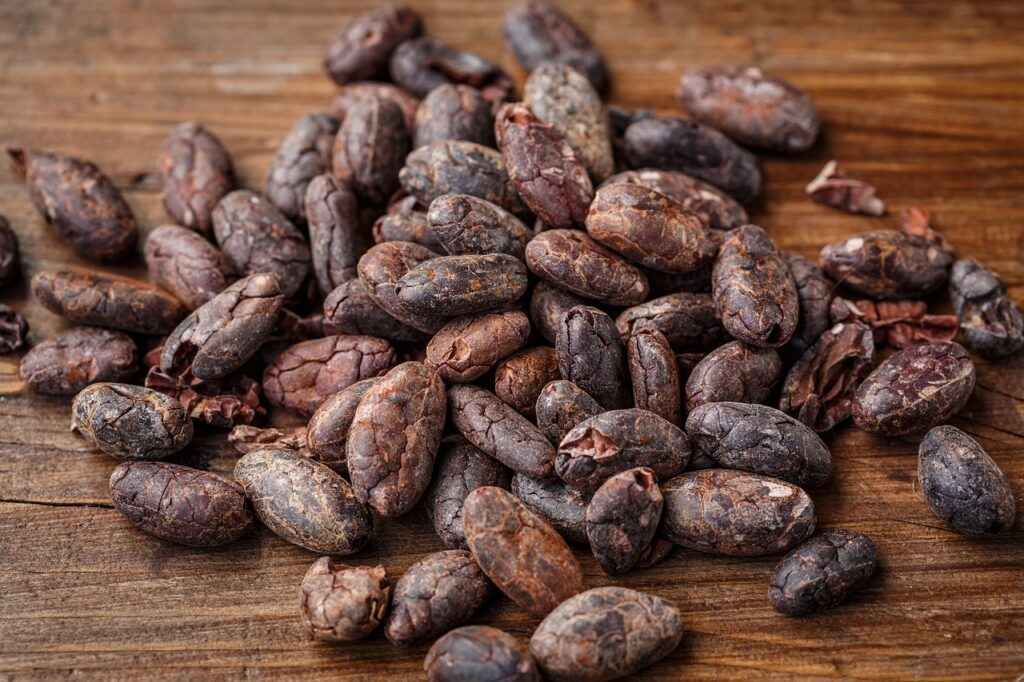Highlights;
- Cocoa prices surged on Wednesday, with December ICE NY cocoa rising +3.07% and September ICE London cocoa climbing +1.53%, driven by reduced rain forecasts in Ivory Coast and tightening inventories.
- Weather and supply concerns remain bullish, as the Ivory Coast faces its driest period in 46 years, potentially impacting cocoa pod retention and the main harvest. Additionally, poor-quality mid-crop cocoa and slower export growth in Ivory Coast are supportive of higher prices.
- Global demand for cocoa is weakening, with Q2 cocoa grindings declining sharply in Europe (-7.2% y/y), Asia (-16.3% y/y), and North America (-2.8% y/y), reflecting slower chocolate consumption and high cocoa prices.
- Mixed production trends include Ghana’s projected 8.3% increase in cocoa output for 2025/26, while Nigeria’s production is expected to drop 11%. Global cocoa stocks remain at a 46-year low, but the International Cocoa Organization forecasts a potential surplus in 2024/25.
Cocoa Market Update: Price Movements and Key Influencers
Recent Price Trends:
- On Wednesday, December ICE NY cocoa (CCZ25) saw a significant rise, closing up by 234 points (3.07% gain).
- Similarly, September ICE London cocoa #7 (CAU25) closed with an 82-point increase, reflecting a 1.53% rise.
Market Drivers:
-
Weather Impact:
- Updated forecasts indicate reduced precipitation in the Ivory Coast over the next week, raising concerns about cocoa production. This region is crucial as it is a major cocoa producer.
- The Commodity Weather Group highlights that the past 30 days through August 15 were the driest in 46 years for the Ivory Coast, potentially affecting cocoa pod retention ahead of October’s main harvest.
-
Inventory Levels:
- ICE-monitored cocoa inventories in U.S. ports dropped to 2,177,187 bags, marking a three-month low. Tighter inventories have bolstered cocoa prices.
-
Supply Factors:
- Ivory Coast Exports: A slowdown in cocoa exports, despite a 5.9% year-over-year increase, has positively influenced prices. Recent data shows 1.79 MMT shipped from October 1 to August 24.
- Quality Concerns: The mid-crop harvest is facing quality issues, with 5-6% of beans deemed poor, up from the main crop’s 1%. This has led to processors rejecting some shipments. Rabobank attributes this to late rains affecting growth.
- Nigerian Production: Nigeria’s cocoa output is expected to fall 11% to 305,000 MT in 2025/25, contributing to a bullish outlook.
-
Production Outlook:
- Ghana’s Increase: Ghana, the second-largest producer, projects an 8.3% rise in its 2025/26 crop to 650,000 MT, which could soften prices.
- Global Deficit and Surplus: The ICCO reports a 2023/24 deficit of -494,000 MT, the largest in over 60 years, with production down 13.1%. However, a surplus of 142,000 MT is forecasted for 2024/25.
Demand-Side Factors:
- Weakness in Demand: European and Asian cocoa grindings fell 7.2% and 16.3% year-over-year, respectively. North America saw a smaller decline of 2.8%, reflecting global demand sluggishness.
- Company Actions: Lower margin guidance from Lindt & Sprüngli and reduced sales volume projections from Barry Callebaut indicate challenges from high cocoa prices.
Conclusion:
Cocoa prices are influenced by a complex interplay of supply and demand factors. While weather concerns and supply tightness drive prices up, weaker demand and increased production in key regions may temper these gains.
Disclaimer:
Rich Asplund, the author, held no positions in mentioned securities at the time of publication. All information is for informational purposes only. For more details, refer to Barchart’s Disclosure Policy.
The views expressed are the author’s and do not necessarily reflect those of Nasdaq, Inc.
Source: https://www.nasdaq.com/articles/cocoa-prices-jump-drier-ivory-coast-weather-and-tighter-supplies


